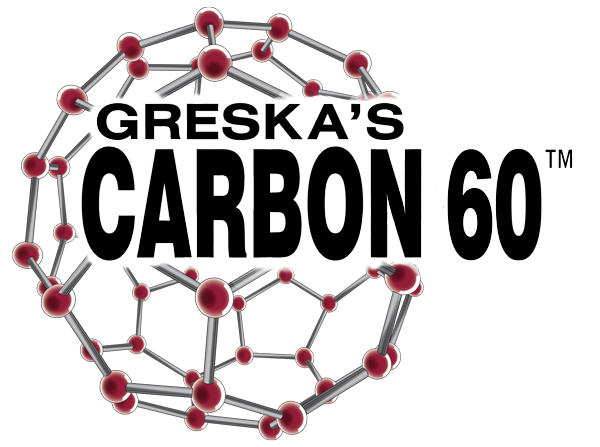What Is C60 (Carbon 60)C60
What Is C60 (Carbon 60)C60
Also called Carbon 60 or Buckminsterfullerene, is a naturally occurring molecule composed of 60 carbon atoms arranged in a hollow, soccer-ball-like structure. Each carbon atom forms part of a network of hexagons and pentagons, giving the molecule a truncated icosahedron geometry. This unique shape is often referred to as a “buckyball,” a name inspired by architect Buckminster Fuller, whose geodesic domes resemble the molecule’s form.
Key Facts About C60• Molecular Formula: C₆₀
• Structure: Spherical carbon cage (20 hexagons + 12 pentagons)
• Discovery: 1985 by Harold Kroto, Richard Smalley, Robert Curl, and colleagues at Rice University• Nobel Prize: 1996 Nobel Prize in Chemistry awarded for the discovery of fullerenes
• Classification: Member of the fullerene family of carbon allotropes (alongside nanotubes and graphene)How C60 Forms in NatureC60 molecules can be created under high-energy, carbon-rich conditions such as:
• Combustion flames
• Certain soot deposits
• Interstellar dust clouds and meteorites, where astronomers have detected fullerenes using infrared spectroscopyUnique Chemical Properties
• Antioxidant Potential: C60’s delocalized electron cloud allows it to interact with reactive oxygen species (ROS) in laboratory studies.
• Stability: C60 is remarkably thermally and chemically stable, resisting degradation under normal environmental conditions.
• Lipophilicity: C60 dissolves best in non-polar solvents and oils, which is why many research preparations are oil-based.
• Photoreactivity: When exposed to light and oxygen, C60 can generate singlet oxygen, a feature studied for materials-science and some biomedical applications.
Historical Timeline 1985 – Kroto, Smalley, Curl discover C60 in laser-vaporized graphite clusters.1990 – Efficient bulk-production of C60 developed using carbon-arc discharge.1996 – Nobel Prize in Chemistry awarded for the discovery of fullerenes.2000s – present – Expanding research into materials science, photovoltaics, lubricants, and biological studies.Common Names and SEO KeywordsCarbon 60 | C60 fullerene | Buckminsterfullerene | Buckyball | Fullerene antioxidant | Spherical carbon molecule | C60 history | C60 properties | C60 usesResponsible Use of InformationC60 remains an active area of materials-science and biomedical research.Any discussion of potential health or therapeutic effects should be based on peer-reviewed research and should avoid unsubstantiated claims.This page is intended to provide educational background on the molecule itself, not to promote specific products or medical treatments.Further Reading and
References
Wikipedia – Buckminsterfullerene (C60): https://en.wikipedia.org/wiki/BuckminsterfullereneWikipedia
Fullerenes: https://en.wikipedia.org/wiki/FullereneNobel Prize in Chemistry 1996
Fullerenes: https://www.nobelprize.org/prizes/chemistry/1996/summary/NASA
Discovery of Fullerenes in Space: https://www.nasa.gov/feature/ames/nasa-discovers-life-s-building-block-in-space-fullerenesPubChem (NIH)
Carbon C60 Compound Summary: https://pubchem.ncbi.nlm.nih.gov/compound/Carbon-C60
Original 1985 Science Paper “C60: Buckminsterfullerene”: https://www.science.org/doi/10.1126/science.229.4710.1188
Royal Society of Chemistry “Buckyballs” Article: https://www.rsc.org/periodic-table/element/6/carbon/buckyballs
Frequently Asked Questions
Cannot Find Your Answer?
